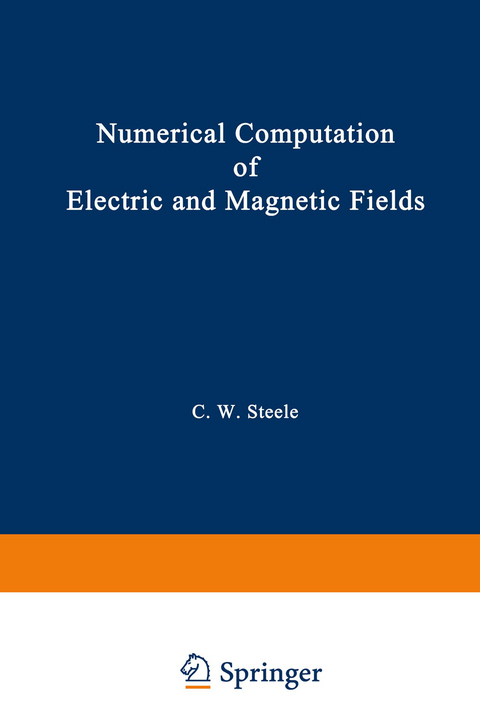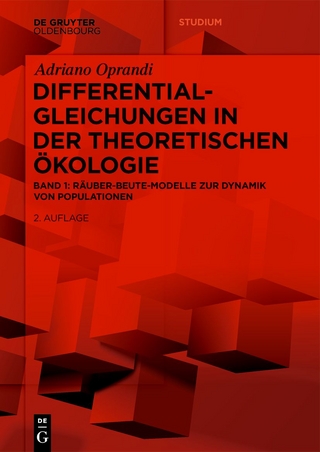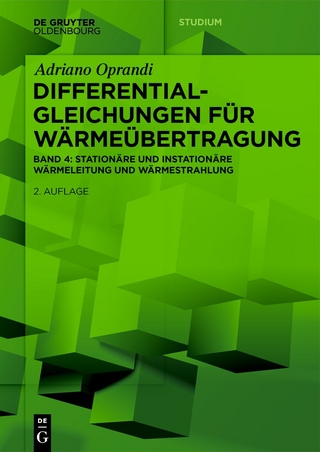
Numerical Computation of Electric and Magnetic Fields
Van Nostrand Reinhold Inc.,U.S. (Verlag)
978-0-442-01434-6 (ISBN)
- Titel z.Zt. nicht lieferbar
- Versandkostenfrei innerhalb Deutschlands
- Auch auf Rechnung
- Verfügbarkeit in der Filiale vor Ort prüfen
- Artikel merken
1. Introduction.- 2. Field Properties.- 2.1 Introduction.- 2.2 Maxwell’s Equations in the Dynamic, Quasi-Static, and Static Cases.- 2.3 Polarization and Magnetization.- 2.4 Laws for Static Fields in Unbounded Regions.- 2.5 Integral Representations for Quasi-Static Fields Using the Helmholtz Theorem.- 2.6 Equivalent Configurations.- 2.7 Steady-State Dynamic Problems and Phasor Field Representations.- 2.8 Continuity Conditions of Fields at a Medium Discontinuity.- References.- 3. Problem Definition.- 3.1 Introduction.- 3.2 Field Problem Domains, Source Problem Domains, Interior Problems, and Exterior Problems.- 3.3 Is the Problem Static, Quasi-Static, or Dynamic?.- 3.4 What Field Is To Be Computed?.- 3.5 Is the Problem Two-Dimensional or Three-Dimensional?.- 3.6 The Medium.- 3.7 Boundary Conditions.- 4. Linear Spaces in Field Computations.- 4.1 Introduction.- 4.2 Basis Functions.- 4.3 Shape Functions.- 4.4 Finite Elements and Shape Functions of Global Coordinates in Two-Dimensional Problem Domains.- 4.5 Isoparametric Shape Functions in Two Dimensions.- 4.6 Finite Elements and Shape Functions of Global Coordinates in Three-Dimensional Problem Domains.- References.- 5. Projection Methods in Field Computations.- 5.1 Introduction.- 5.2 Special Linear Spaces in Field Computations.- 5.3 Operators in Field Calculations.- 5.4 Approaches Used in Obtaining Approximate Solutions to Field Problems.- 5.5 Finite Element Method for Interior Problems.- 5.6 Integral Equation Method.- 5.7 Projection Methods.- 5.8 Orthogonal Projection Methods.- References.- 6. Finite Element Method for Interior Problems.- 6.1 Introduction.- 6.2 Formulation of Finite Element Method for Interior Problems.- 6.3 Computation of Linear System for Finite Element Method.- 6.4 Sample Problem.- References.- 7.Finite Element Method for Exterior Problems.- 7.1 Introduction.- 7.2 McDonald-Wexler Algorithm.- 7.3 Silvester et al. Algorithm.- References.- 8. Integral Equation Method.- 8.1 Introduction.- 8.2 Linear and Uniform Media in Continuity Subdomains.- 8.3 Saturable, Nonlinear, and Nonuniform Media in Continuity Subdomains.- 8.4 Numerical Solution of Integral Equations — General Approach.- 8.5 Finite Elements and Basis Functions Used in the Integral Equation Method.- 8.6 Integral Equation Numerical Solution by the Collocation Method.- 8.7 Integral Equation Numerical Solution by the Galerkin Method.- 8.8 Numerical Integration.- 8.9 Sample Problem.- References.- 9. Static Magnetic Problem.- 9.1 Introduction.- 9.2 Interior Static Field Problems.- 9.3 Exterior Static Problems Approximated by Interior Problems.- 9.4 Exterior Magnetic Static Problem.- 9.5 Static Magnetic Field in a Saturable Medium.- References.- 10. Eddy Current Problem.- 10.1 Introduction.- 10.2 Commonly Used Basic Formulations for the Eddy Current Problem.- 10.3 Simple Two-Dimensional Eddy Current Problem.- 10.4 Projection Methods for General Eddy Current Problems.- 10.5 Eddy Current Problem Formulation.- References.- Appendix A Derivation of the Helmholtz Theorem.- Appendix C Integral Expressions for Scalar Potential from Green’s Theorem.
| Erscheint lt. Verlag | 1.6.1998 |
|---|---|
| Zusatzinfo | 20 Illustrations, black and white; XVI, 224 p. 20 illus. |
| Sprache | englisch |
| Themenwelt | Mathematik / Informatik ► Mathematik ► Analysis |
| Naturwissenschaften ► Physik / Astronomie | |
| Technik ► Elektrotechnik / Energietechnik | |
| ISBN-10 | 0-442-01434-1 / 0442014341 |
| ISBN-13 | 978-0-442-01434-6 / 9780442014346 |
| Zustand | Neuware |
| Informationen gemäß Produktsicherheitsverordnung (GPSR) | |
| Haben Sie eine Frage zum Produkt? |
aus dem Bereich


